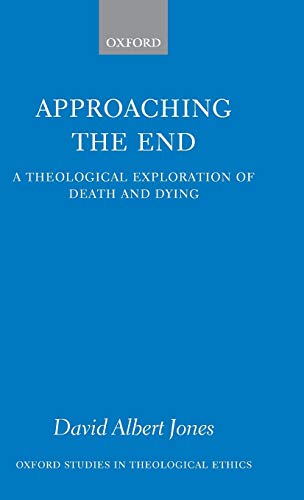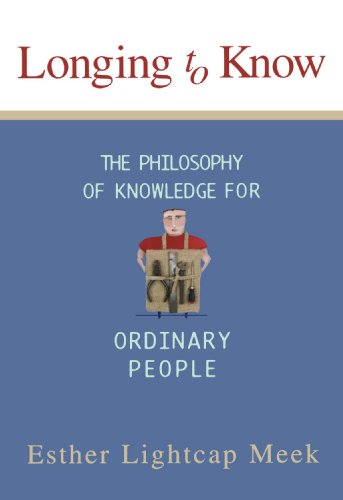Reformed and Always Reforming: The Postconservative Approach to Evangelical Theology
Written by Roger E. Olson Reviewed By Adonis ViduThere seems to be a growing recognition that the evangelical world is deeply fragmented. Some have even gone as far as to say that the word “evangelical” has lost any discriminating force, that it no longer identifies a homogenous movement. Olson agrees with the diagnosis of the fragmentation, but argues that the movement has in fact always been inherently at conflict with itself. The historical root of this specific make-up is the twin inheritance of Puritanism, with its accent on right belief, and Pietism, stressing spiritual experience. The present outgrowth of that tension is reflected in the intense and sometimes unfair debates between conservative and postconservative evangelicals. This book sets out to chart that tension, from the perspective of a postconservative.
Olson’s thesis is that “it is possible to be more evangelical by being less conservative” (p. 7). He does not believe that conservative evangelicals have a monopoly on the essence of evangelical Christianity. In fact, their own manner of asserting a certain cognitive component of Christianity is tributary to a modernistic epistemology. On the other hand, postconservatives, without denying the importance of the cognitive, tend to see the enduring essence of evangelicalism, its contribution to world Christianity in its transformational vision. The latter see Christianity first and foremost as a religion of transformation. If doctrines are important, they are always secondary to the ongoing work of the Spirit, transforming the lives of people into the divine likeness.
The itching point in this conflict is how one conceives of the authority of the Word of God in relation to Scripture and whether theological revision is consistent with being an evangelical. Olson argues that conservatives are actually betraying the authority of Scripture when in practice they hang on to certain “classic” doctrines just because they are part of the “established evangelical position.” Although sometimes they confess that their ultimate authority is Scripture, in practice they show almost no willingness to revise a theological position in light of what might be “fresh” understanding of Scripture, as Olson likes to describe it. On the other hand, postconservatives locate ultimate theological authority in God and the Holy Spirit, who speaks through the Scriptures. Olson is ambiguous on this score, since on the one hand he claims that he is ascribing more authority to Scripture than conservatives, but on the other hand he rejects an “unnuanced equation of Scripture with God’s Word” (p. 108) and prefers to locate authority directly in the continuing work of the Spirit in the contemporary church through Scripture. As a result, the past is binding, but not in the sense that it has to be repeated. Rather, theological construction is free to be creative, to draw on the truth that is found in culture, to use its imagination in order to re-perform (Vanhoozer) the script that is found in Scripture. However, the bottom line for Olson, as for many postconservatives, is that if Scripture is authoritative, it is only by its being included in an ongoing drama of redemption, which began at creation and is presently unfolding towards its eschatological consummation.
Although the essence of evangelicalism is experience rather than right doctrine, orthopraxy rather than orthodoxy, Olson insists against popular misconception that doctrine remains important for postconservatives. But doctrine is a second-order reflection upon the experience of the church. Of course, once one puts it like that one must also be ready to explain why this is not Schleiermacherian liberalism. It is common place that Schleiermacher made the starting point of theology a universal human experience. The difference, Olson contends, is that postconservative theology appeals to a particular and supernatural, rather than a universal and natural, experience of being saved and being constituted into a redeemed community by the Holy Spirit.
The reason that it is possible, therefore, to be more evangelical by being less conservative lies precisely in the second-order nature of theology. If theology is subservient to an experience, then what is primary is the authenticity of that experience. What distinguishes evangelicals is not primarily right doctrine, but having one’s life centered on Jesus Christ, experiencing spiritual transformation after his own image through the power of the Spirit. Olson explains this by arguing that evangelicalism is a centered set rather than a bounded set. What defines it is its experience of the risen Christ, rather than boundary-setting right doctrines.
It is hard to do justice to such a wide-ranging book in such a short space. It is even more difficult to properly critique it, since restraint due to space might be mistaken for hurried dismissals. It is rather clear that American evangelicalism is facing years, possibly decades of intense theological debate and perhaps confrontation. This is what I believe will, or should, set the agenda of those conversations.
First, Olson makes a compelling point about the inherently unstable nature of evangelicalism. I am not sure that can be resolved short of a magisterium that legislates what belongs and what does not. I think more work needs to be done on the understanding of the cohesion between Puritanism and Pietism, as well as other influences that have contributed to the development of modern evangelicalism, including modernity and postmodernity. But sociological designators are themselves inherently unstable. There are no universal encyclopedias to tell us what the essence of an evangelical is. At the same time, I found Olson’s identification of the essence of evangelicalism with an experience to be only a partial description of its contribution, as long as no mention was made of justification by faith. If one were to use a classic pair of concepts, Olson does tend to place the emphasis more on sanctification than on justification, when in fact a creative dialectic should be preserved between them.
A second issue that Olson leaves pretty much hanging is the relation between the cognitive-propositional and the transformational aspects of revelation. Although he does acknowledge that there are propositional aspects to revelation, he does not seem willing to allow them to carry through into doctrine so that there might be certain doctrines which are epistemically primary, so to speak. This becomes even more important given his acceptance of holism (not a very nuanced one, for that matter), which in its more extreme forms holds that any belief whatsoever can be abandoned in the face of compelling evidence or for the pragmatic purpose of keeping the balance of the system. But if any belief can be relinquished, in what sense does it continue to speak of the authority of the Holy Spirit that speaks through the Scriptures? Moreover, and this pertains to his set analogy, how is it possible to even identify the center apart from some description of circumference? Unless we speak of circumference, even if we allow variation in distance from the center, what we will have identified is not a center, but simply a dot, a point in space. However, it is analytic to a point being a center that it is in some relation to circumferences.
Finally, Olson’s understanding of the role of tradition is somewhat self-contradictory. On the one hand he does relocate theological authority from the past (Scripture) into the present (continuing work of the Spirit), by circumventing tradition, but he seems not to realize that this present is precisely tomorrow’s tradition! He forgets that Eastern Orthodox Christianity views tradition as precisely the life of the Spirit in the church. So the direction in which I can see more research being done is the relationship between Scripture, the Great Tradition, and the epistemic relevance of the continuing work of the Holy Spirit. Admittedly, much evangelical theology is pneumatologically underdeveloped, but it remains to be seen whether compensating for that weakness should lead precisely in the revisionist direction favored by Olson.
Adonis Vidu
Adonis Vidu
Gordon-Conwell Theological Seminary
South Hamilton, Massachusetts, USA
Other Articles in this Issue
Though his primary concern was how to persuade people from diverse backgrounds to embrace the gospel of Jesus Christ (1 Cor 9:12, 23), Paul, nonetheless, embodies a principle common to all who would provide leadership to a community comprised of a multiplicitous collection of rigid truth claims and behaviors...
The Ethnic Enemy—No Greek or Jew . . . Barbarian, Scythian: The Gospel and Ethnic Difference
by Keith FerdinandoWhatever 'globalisation' may be, it has been accompanied by insistent and sometimes violent affirmations of ethnic identity...
Despite a small flurry of attention over the past decade, Adolf Schlatter (1852–1938), Tübingen professor of New Testament and author of more than 440 written works, remains one of the most neglected yet illuminating theological voices of the past one hundred years...
Commentators have customarily interpreted Phil 2:12 as a reference to "working out" one's personal salvation...
Salvation History, Chronology, and Crisis:1 A Problem with Inclusivist Theology of Religions, Part 1
by Adam SparksA fundamental requirement in an inclusivist understanding of the relationship between Christianity and other religions is evidence of God's salvific activity outside of any knowledge of Christ...







